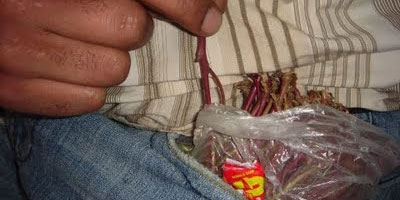As a section of the Kenyan population take up spiked drinks such as Yokozuna, to a tragic end, others are seeking a less potent kind of high, khat – more commonly known as Miraa.
For several years now the number of cars with loud music and tinted windows that are parked at select petrol stations in the country is growing, to the point that visitors to mini-shops at the station have no parking space.
Often with sleek rims, the cars’ occupants pose as they chew miraa stems in cocktail of either Big G (yes it still exists) or peanuts.
 The revelers rarely take the khat with alcohol, as the latter is prohibited in the gas stations.
The revelers rarely take the khat with alcohol, as the latter is prohibited in the gas stations.
According to Wikipedia, Miraa contains the alkaloid called cathinone, an amphetamine-like stimulant which is said to cause excitement, loss of appetite, and euphoria. In 1980, the World Health Organization classified khat as a drug of abuse that can produce mild to moderate psychological dependence, albeit less than tobacco or alcohol.
Though popular in certain areas of the country, Kenya has Somalia to thank for the vast profits being raked in by the multi-million shilling cut-throat trade – the chief export of Meru County.
According to research, chewing miraa is the most prevalent form of drug abuse in Somalia.
Various medical reports have indicated that chewing Miraa leads to increased energy levels, alertness, confidence and mood elevation.
However, prolonged use has several side effects, such as insomnia, a condition that the users sometimes try to overcome with sedatives or alcohol.
A survey conducted by DARS and Synovate in Hargeisa in June found that the youth there are aware of the adverse effects of consuming the drug.
59 percent of those surveyed said chewing miraa leads to family problems while 58 percent felt it hinders personal development.
Consumers often divert income to purchase Miraa, neglecting their families in the process.
The withdrawal symptoms include lethargy, mild depression, slight trembling and recurrent bad dreams.
The study further says that, continued use may endanger health in that the resulting anorexia leads to malnutrition and increased susceptibility to infectious diseases.
The same story could be said for Kenya, if young people are not made aware of these side effects.
The miraa high takes hours to achieve and users stay with the buzz for several hours, making it extremely popular. Parents neglect cautioning their children about it because it seems like a lesser evil than tobacco or alcohol. However, reversing the side effects of the drug are much more taxing.
Other conditions that can be caused by miraa chewing are oral cancer, constipation and impotence. Do you know someone you can educate?

